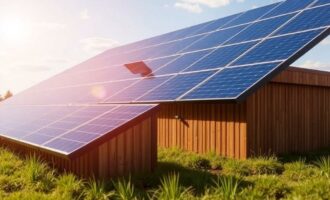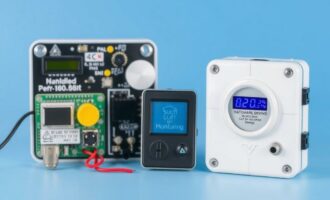- What is Vehicle-to-Grid (V2G) and why it matters
- A quick history and where we are now
- How using EVs as home batteries compares to home battery systems
- How V2G works: the technology behind two-way charging
- Two-way chargers
- Communication and control systems
- Battery management and degradation concerns
- Grid integration and standards
- The benefits of using EVs as home batteries
- Cost savings and energy bill management
- Backup power during outages
- Support for renewables and grid resilience
- Potential revenue streams
- Practical challenges and trade-offs
- Hardware availability and cost
- Compatibility and standards
- User complexity and convenience
- Regulatory and market barriers
- Insurance and warranty questions
- Real-world examples and pilots
- Residential pilots
- Commercial and fleet applications
- Community microgrid projects
- How to prepare your home and EV for V2G
- 1. Check vehicle and charger compatibility
- 2. Assess your power needs
- 3. Design the right hardware setup
- 4. Set user preferences and automation
- 5. Consider financials and incentives
- 6. Plan for maintenance and warranty
- Costs, savings and a simple payback table
- Common use cases and scenarios
- 1. Time-of-use bill optimization
- 2. Solar self-consumption increase
- 3. Emergency backup
- 4. Grid services for income
- Safety, regulations, and best practices
- Isolating loads during outages
- Electrical code and permitting
- Cybersecurity and privacy
- Environmental and social considerations
- Policy, markets, and the role of aggregators
- Aggregation is key
- Market access and fair compensation
- Regulatory clarity and incentives
- What the future might look like
- Smarter energy ecosystems
- Lower need for stationary storage
- New business models
- Standardization and interoperability
- Frequently asked questions
- Will V2G drain my car so I can’t make my trip?
- Does V2G damage batteries?
- How long can my EV power my home in an outage?
- Is V2G available everywhere?
- What happens if many people use V2G at once?
- Checklist: Is V2G right for you?
- Quick tips before you start
- Conclusion
Imagine coming home in the evening, plugging your electric vehicle (EV) into the charger, and then watching it quietly power your house as you make dinner. Picture your EV not just as a mode of transport but as a two-way energy partner that helps you save money, back up your home during outages, and even support the wider electrical grid. That’s the promise of Vehicle-to-Grid (V2G) technology — a shift in how we think about energy storage and the role of personal vehicles in a decarbonized, resilient energy future. In this article I’ll walk you through what V2G is, how using EVs as home batteries works, the benefits and trade-offs, real-world examples, how to prepare your home and EV for two-way charging, policy and market issues, and what the near-term future might look like. Whether you’re curious about the tech, considering an EV purchase, or looking to make your home more energy-independent, this guide is for you.
What is Vehicle-to-Grid (V2G) and why it matters
Vehicle-to-Grid, or V2G, is a system in which electric vehicles can not only draw power from the grid to charge their batteries but can also feed electricity back into the grid or into a home. This reverses a traditional flow of electricity and turns parked EVs into distributed energy resources. At its simplest, V2G allows EVs to act as mobile batteries that can be dispatched when needed.
Why does this matter? As renewable energy like solar and wind grow, the grid faces new challenges: intermittency, the need for flexible capacity, and the balancing of supply and demand in real time. Instead of building massive new stationary batteries or peaker plants, the combined storage capacity of millions of parked EVs could provide significant flexibility. On the consumer side, V2G enables homeowners to use their car’s battery to reduce electricity bills, avoid expensive demand charges, and have a backup power source.
A quick history and where we are now
The concept of vehicles providing power back to the grid is over two decades old, but real-world pilots only gained momentum in the last 10 years as EV adoption accelerated, chargers became smarter, and policy incentives emerged. Early tests were small-scale, often funded by utilities or research institutions. Today, pilots are expanding to real neighborhoods and commercial fleets, with some bike-shed examples proving economic and technical viability. Still, widespread adoption is limited by standards, hardware availability, and regulatory frameworks — but momentum is growing rapidly.
How using EVs as home batteries compares to home battery systems
A key question people ask is whether their EV can replace a dedicated home battery system like a Tesla Powerwall. The answer: it depends. EVs often have larger batteries than home systems and can therefore store more energy; however, they are mobile and have to balance mobility needs with home energy needs. Dedicated home batteries are stationary, designed for many cycles, and often integrated into home energy systems. V2G brings flexibility and cost advantages for many users, but it is not a direct one-to-one replacement in every scenario.
How V2G works: the technology behind two-way charging
There are several technical pieces that enable V2G. Let’s break them down in plain terms.
Two-way chargers
The heart of V2G is the bidirectional charger. Standard chargers let energy flow from the grid to the car. Bidirectional chargers do both directions safely and efficiently. For home use, these chargers need to handle AC or DC as required, convert power between the car battery and the home/grid, and communicate with both the vehicle and energy management systems.
Communication and control systems
V2G requires intelligence. Chargers, vehicles, and grid operators must share information: battery state-of-charge, user preferences (like desired departure time), grid conditions, and signals for when to charge or discharge. This is typically done via secure software platforms using standards or proprietary protocols. The system needs to respect the vehicle owner’s needs — for instance, ensuring the car has enough charge to make the next trip.
Battery management and degradation concerns
One frequent concern is whether using an EV battery for V2G will wear it out faster. Batteries do degrade with cycles and calendar time, and using them for more cycles could theoretically reduce lifespan. However, smart V2G systems can limit the depth of discharge and control cycle count to minimize incremental degradation. Some studies suggest that well-managed V2G can provide services without significant additional wear; others recommend compensation or warranty provisions to cover battery impacts.
Grid integration and standards
For V2G to scale, standards and regulatory support are crucial. Standards ensure vehicles, chargers, and grid systems can interoperate. A few standards already exist (or are in development) that address communication, safety and power flow. Countries and utilities are beginning to define how V2G resources can participate in electricity markets, frequency regulation, and demand response programs.
The benefits of using EVs as home batteries
The idea of your car powering your life is exciting, and it brings several concrete benefits. Below are major advantages to consider.
Cost savings and energy bill management
Using your EV as a home battery allows you to shift when you buy electricity. Charge during low-rate periods or when your rooftop solar is producing, and discharge during peak rate periods or when grid prices are high. This “time-of-use arbitrage” can significantly reduce electricity bills for homes on time-varying pricing plans.
Backup power during outages
A fully charged EV can provide crucial backup power during blackouts. With proper equipment, you can run essential circuits — lights, refrigerator, Wi-Fi, medical devices — directly from your car for hours or even days depending on battery size and consumption.
Support for renewables and grid resilience
Aggregated V2G capacity helps balance the variability of wind and solar power by absorbing excess generation and supplying power during shortfalls. This supports higher renewable energy penetration without risking grid instability. Fleet- and utility-scale V2G can also provide fast-response services like frequency regulation.
Potential revenue streams
In regions where grid operators pay for ancillary services, EV owners or aggregators can earn revenue by allowing their vehicles to participate. Pooled V2G resources can bid into markets for capacity, demand response, and frequency regulation, generating income for participants.
Practical challenges and trade-offs

It’s not all upside. Several practical challenges must be considered before relying on your EV as a home battery.
Hardware availability and cost
Bidirectional chargers and V2G-capable vehicles are not yet the norm. While prices are falling, two-way chargers cost more than standard chargers, and retrofitting existing systems can be expensive. For some homeowners, the upfront investment may take years to pay back in energy savings.
Compatibility and standards
Not all EVs support V2G today. Vehicle manufacturers have different hardware and software strategies. Similarly, chargers and home energy systems must be compatible. This fragmentation slows deployment.
User complexity and convenience
Managing V2G requires more decisions: when to charge, when to discharge, how much range to preserve. Apps and automation can handle much of the complexity, but some users may find the setup intimidating.
Regulatory and market barriers
Laws and tariffs are not consistent across jurisdictions. In some places, regulations prevent small distributed resources from participating in wholesale markets or receiving fair compensation for grid services. Policies and tariff design need to evolve to fairly value V2G services.
Insurance and warranty questions
Using a car battery in new ways raises questions about warranty coverage and insurance liability. Some manufacturers may limit or deny warranty coverage if they believe usage outside standard charging has caused battery failure. It’s essential to check the fine print and, where possible, purchase V2G services that include protections.
Real-world examples and pilots

To understand V2G more concretely, it helps to look at actual projects and pilots that are testing the technology at scale.
Residential pilots
In some communities, utilities and private firms have run pilots where homeowners with compatible EVs get paid to allow vehicle discharge during peak events. These pilots often focus on time-of-use savings and grid services like demand response. Results generally show modest but meaningful savings and strong owner satisfaction when systems are well managed.
Commercial and fleet applications
Fleets are probably the low-hanging fruit for V2G. Buses, delivery vans, and corporate fleets have predictable parking patterns and high aggregate capacity. Several transit agencies and delivery fleets have tested V2G to shave peak power needs and lower charging costs. Fleet operators can manage battery usage more centrally, which simplifies participation.
Community microgrid projects
Some community microgrids use EVs as part of their resilience strategy. In these setups, EVs provide localized backup power services to small neighborhoods or critical facilities during outages, working alongside rooftop solar and stationary batteries.
How to prepare your home and EV for V2G
If you’re interested in using your EV as a home battery, there are practical steps to take. Below is a step-by-step guide to help you prepare.
1. Check vehicle and charger compatibility
Not all EVs or chargers support bidirectional power flow. Start by checking the specifications of your vehicle and charger, or talking to your dealer and charger manufacturer about V2G capability. If your current equipment isn’t compatible, you’ll need to consider upgrades.
2. Assess your power needs
Estimate how much power you might want from your EV for home use. Think about which circuits you’d like to run during an outage and for how long. This helps determine how many kilowatt-hours from your car you need to reserve.
3. Design the right hardware setup
You’ll need a bidirectional charger, a transfer switch or critical load panel to isolate your home circuits during grid outages, and possibly an energy management system. A certified electrician familiar with V2G installations is essential.
4. Set user preferences and automation
Install the necessary software or apps that allow you to set charging/discharging schedules and priorities. Automation is key: define your required departure charge, minimum state-of-charge, and opt-in rules for grid events.
5. Consider financials and incentives
Look into utility programs, tax credits, and rebates that may offset equipment costs. Some utilities offer incentives for bidirectional charger installation or V2G participation programs that provide periodic payments.
6. Plan for maintenance and warranty
Keep records of how the system is used and any agreements with vendors. Check warranties and seek offers that cover battery wear if possible.
Costs, savings and a simple payback table
Understanding the economics helps make an informed decision. Below is a simplified table comparing typical costs and potential savings for a homeowner considering V2G versus a standard home battery. These are illustrative values and actual numbers depend on local prices, rates, incentives, and vehicle battery size.
| Item | V2G setup (bidirectional) | Standalone home battery |
|---|---|---|
| Typical equipment cost | $3,000–$8,000 (charger + install + transfer switch) | $8,000–$15,000 (battery + inverter + install) |
| Storage capacity | Depends on car (30–100+ kWh) | 10–20 kWh common |
| Availability for home use | Only when car is parked and connected | Always available |
| Potential annual energy bill savings | $200–$1,000+ (depends on use and rates) | $300–$1,200 (depends on use and rates) |
| Backup duration | High if EV battery large; depends on car | Moderate (fixed capacity) |
| Life cycle and warranty concerns | Possible battery wear unless covered | Designed for high cycles, often with warranties |
Common use cases and scenarios
Here are practical scenarios where using an EV as a home battery makes sense.
1. Time-of-use bill optimization
If your utility has cheap overnight or midday rates and expensive peak rates, charge during the cheap times and use your car battery to power your home during peak hours.
2. Solar self-consumption increase
If you have rooftop solar, you can store excess midday production in your EV and use it in the evening, increasing how much solar energy you consume directly.
3. Emergency backup
During storms or grid outages, your EV can power essential household circuits. This is especially valuable if outages are frequent and long.
4. Grid services for income
If your area allows small distributed resources to participate in ancillary markets, you can earn money by providing frequency response or demand shaving services, often through an aggregator.
Safety, regulations, and best practices
Safety must be central to any V2G setup. Here are important considerations.
Isolating loads during outages
A transfer switch (manual or automatic) is essential so the home’s circuits connected to the EV are isolated from the grid during an outage. This prevents backfeeding into the grid which could endanger service workers.
Electrical code and permitting
Work with a licensed electrician and obtain necessary permits. Electrical codes may vary by locality and may have specific requirements for bidirectional charging equipment.
Cybersecurity and privacy
V2G systems involve communications between cars, chargers, and servers. Strong cybersecurity practices, encryption, and careful vetting of vendor software help protect against hacking or privacy breaches.
Environmental and social considerations
While V2G supports renewable integration, it should be implemented equitably. Programs should ensure accessibility to lower-income households and consider the distribution of benefits across communities.
Policy, markets, and the role of aggregators
Widespread V2G adoption requires supportive policy and market design.
Aggregation is key
One car alone is a small resource, but aggregators can pool many EVs to provide meaningful capacity to the grid. Aggregators also simplify participation by handling bidding, dispatch, and settlements with grid operators.
Market access and fair compensation
Grids must recognize and reward the services V2G can provide, like frequency regulation, capacity, and demand response. Fair compensation structures and transparent mechanisms will encourage owners to participate.
Regulatory clarity and incentives
Clear rules covering interconnection, safety, tariffs, and standards reduce uncertainty and encourage investment. Incentives like rebates for bidirectional chargers or pilot program funding can help jumpstart adoption.
What the future might look like

If V2G scales, the energy landscape could change in several ways.
Smarter energy ecosystems
Homes, vehicles, and utilities will coordinate more tightly through software platforms. Automation will handle most decisions: charging when cheap or green energy is available, discharging when rates spike or when the grid calls on the resource.
Lower need for stationary storage
The aggregate capacity of parked EVs could reduce the need for some new stationary storage deployments, especially for short-duration services like frequency regulation.
New business models
Utilities, automakers, charger manufacturers, and new aggregators will develop business models around V2G: leasing battery capacity, offering resiliency bundles, or providing pay-as-you-go backup services.
Standardization and interoperability
Industry standards will mature, ensuring vehicles, chargers, and grid operators can interoperate globally. This will reduce friction and accelerate adoption.
Frequently asked questions
Below are answers to common questions people ask about V2G and using EVs as home batteries.
Will V2G drain my car so I can’t make my trip?
No — good V2G systems prioritize the owner’s mobility needs. You set a minimum state-of-charge and required departure charge. The system will not discharge below these limits.
Does V2G damage batteries?
Any extra cycling can contribute to degradation, but controlled usage and shallow cycles can keep additional wear minimal. Some programs offer compensation or warranty coverage for battery wear.
How long can my EV power my home in an outage?
It depends on battery capacity and home consumption. A 60 kWh battery powering essential loads (say 2 kW average) could theoretically provide 30 hours of power; real-world conditions, inverter losses, and reserve requirements reduce that. You’ll want to plan which circuits are essential.
Is V2G available everywhere?
Not yet. Availability depends on vehicle compatibility, local hardware, utility programs, and regulations. Some regions have active pilots and commercial offerings; others are just beginning.
What happens if many people use V2G at once?
Grid operators and aggregators manage dispatch to avoid local overloads. Smart controls, local transformers monitoring, and staggered schedules help maintain reliability. In the long run, V2G can improve grid resilience rather than harm it.
Checklist: Is V2G right for you?
If you’re deciding whether to explore V2G, run through this checklist to assess suitability.
- Do you live where bidirectional chargers and V2G programs are available?
- Do you park your EV at home for long stretches during the day or overnight?
- Are your electricity rates time-of-use or do you face high peak charges?
- Do you have or plan to install rooftop solar?
- Are you comfortable installing a transfer switch and working with an electrician?
- Would backup power during outages be valuable to you?
If you answered yes to several of these, V2G could be a compelling option.
Quick tips before you start
- Talk to your vehicle manufacturer about V2G support and warranty implications.
- Consult your utility to learn about relevant programs and incentives.
- Work with certified electricians experienced in bidirectional systems.
- Start with pilots or small steps — you can always expand later.
Conclusion
Vehicle-to-Grid and using EVs as home batteries open a world of practical benefits — cost savings, backup power, and a strong ally for renewable energy — while also bringing technical and regulatory challenges that are quickly being addressed; for many homeowners and fleets the idea of their parked car acting as a mobile power plant is not just futuristic hype but an achievable, valuable tool today if they choose compatible vehicles and chargers, set clear preferences for mobility and energy use, and work with trusted providers or aggregators to manage battery health and grid interactions, making V2G a promising component of a cleaner, smarter, and more resilient energy future.
Как вам статья?







